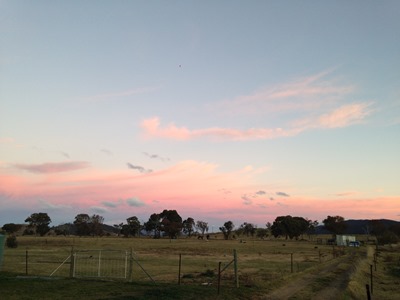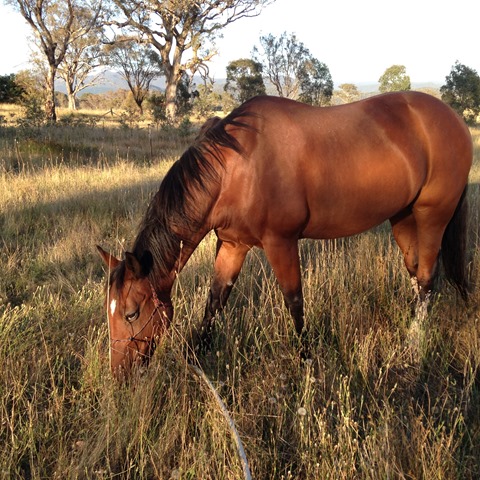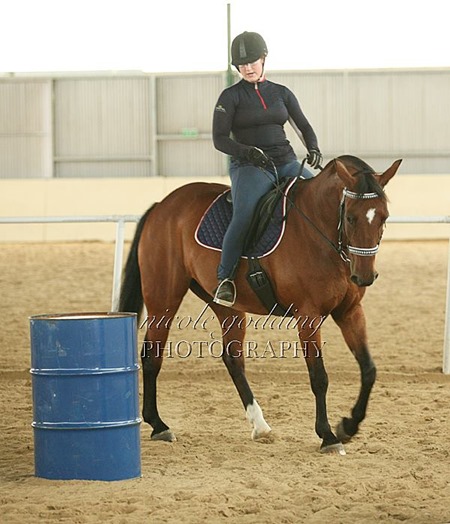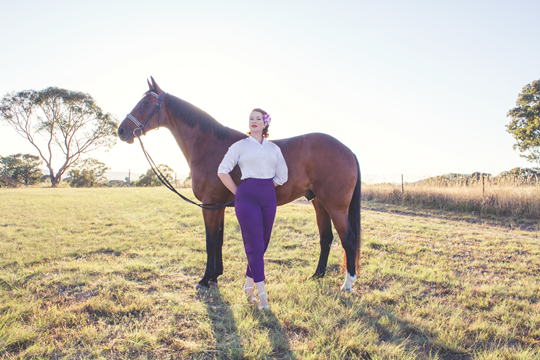It wasn’t enough for Copper to come down with string halt and basically be completely broken and mostly unrideable for the next twelve to eighteen months, oh no….

Unfortunately, his string halt diagnosis brought on a whole pile of barn drama that had to be dealt with as well, and that was a saga in and of itself!
The set up with the private paddocks at our facility work like this:
Someone buys into the paddock with a $2,500 deposit and now “owns” the rights to the land. They are responsible for all interior fencing, and the care and management of the pasture, barring weed spraying. They are allowed to buy and set up any structures they may like to within the guidelines; this can be as simple as a garden shed to hold tack, to a stable, muck heap, hay shed, yards, etc - the full she-bang.
The owners of the private paddock are then allowed to host a “guest” to help defray the weekly cost of agistment - or rent on the land.
I moved into a private two horse paddock as a guest, and well, ended up with a homeless horse.
It’s a long and involved story, but it started earlier than the stringhalt. Previously, there’d been a few issues as we were settling into the shared arrangement – things like the owner moving horses around and not filling up water troughs properly, not telling me when the worming was happening so the worming didn’t happen simultaneously on both horses like it needs too, gates getting broken, (Copper apparently tried to jump a gate and bent it! But must have scrambled over somehow…) – incidents that can cause problems at the time, but honestly, I thought we’d moved past all of it.
When the problems occurred, I’d done my best to communicate clearly and fix any issues my horse had caused. In short, I’d done my best to hold up my end of the bargain and be a responsible guest.
However, when the vet said that Copper absolutely had to be kept off the the flatweed and needed to be penned/yarded for as long as necessary, all hell kind of broke loose and we were basically threatened to be kicked out of the paddock. I had to let Copper back into the paddocks (because someone else down there had said that would be okay to do… Um, what?! Since when do we veto vet’s orders with a random’s “advice”?) or move him out in three weeks. The situation came down to the fact that it was inconvenient for the owner to let him stay in the only yard area that was suitable, and she wasn’t happy that he had to be in there.
Past issues were dragged up again, and though I did my best to handle the situation, I knew it wasn’t going to work any longer. I didn’t want to stay somewhere where I wasn’t welcome and were I couldn’t trust the owner to deal with the necessary management of my horse in a reasonable manner.
To top it all off while this back and forth was happening – Copper developed a lymphatic systemic reaction.
 - Wut you meenz; I iz twubble? Corz not!! Now FEED me human bean! -
- Wut you meenz; I iz twubble? Corz not!! Now FEED me human bean! -
It started off as a bump above his right eye, and I thought that maybe a bit of dust or hayseed from the round bale he was eating from had gotten in his eye and caused the swelling. I’d seen that happen before, the incident that developed a partial cataract on the outside edge of his left eye. I palpitated all around the eye and couldn’t see any redness, weeping, or tenderness.
The next day I came out to check on him and it had gone down, so I kept a close eye on it. Come the day after and it had drained down under his jaw. I thought that was really odd – was it an abscess that had moved? I put Tuff Rock on it to see if it would burst and drain, like what had happened when he had a possible case of fistulous withers.
Nothing happened so I called the vet – my vet was away on holidays, so I had to call someone else about it, and it was four days after the bump had first appeared. Not-my-vet was concerned it was a case of strangles…. I was like Huh???
Note that:
- Copper had absolutely no discharge from the nostrils
- No fever
- Was bright eyed and eating his food
- Swelling was only under one side of the jaw
Anywho, I then had to remove Copper into an isolation paddock as per the vet’s recommendation.
So we walked him down to the hospital paddock which is near the main office buildings and stables, and set him up in there until the vet could assess him.
Blood test that revealed nothing and a double course of antibiotics later, so – two weeks in total - Copper still had a lump under his jaw and was still stuck in the hospital paddock.
Then the day after he finished those antibiotics, his back legs puffed up like sausages from the hocks down. I took his rugs off to discover he had swollen lumps all underneath his body, and a swollen sheath besides.
I had a chat to the manager and she confirmed my suspicions that the swelling was in his lymphatic system – he had a case of systemic edema. As it was a public holiday when this cropped up, as well as a Sunday (!! Why horse, why??) we decided that we’d see how he was doing in the evening and call the vet out the next day if there was no improvement.
Copper seemed a bit down and quiet at this point, but he didn’t have a temperature, and was eating quite well. So besides being a bit moody, all his systems were functional and his vitals were sound.
I was very relieved to come back that evening to discover the swelling had gone down by half! The next day it was still there, but less and by the middle of the week he was fine again.
Ugh. Horses.
I still have no idea what caused the reaction – it wasn’t bacterial, the vet didn’t think it was viral, so??? Stress perhaps?
My reasoning was this: he has been used to a way large grazing area (up to 10 or 12 acre paddocks), a large herd and a much more “natural” way of living.
Since moving, his grazing has be cut down to 1.5 acre paddocks at most, then he got stringhalt, was yarded in a tiny paddock area and had to be hard fed with round bale hay, and hard feed everyday.
On top of that, he was now separated from his one and only paddock mate, but then even worse, he was isolated for two weeks.
After that reaction, we kept him there for a day or two to monitor him, but then we had to make decisions about whether to move him back to the old paddock where the owner did not want us, or wait it out and try to find a new paddock to move into asap.
We decided to wait it out, and after one failed match up, we finally found a new situation.
Six weeks of living in the hospital paddock, being homeless hobos, and Copper moved into a new home!

Thankfully, he appears to have settled in nicely at the new place, and he has made friends with the chestnut mare who is more than happy to boss him about.
I’m happy there too – after a bit of stress and hassle getting everything organized at the new place, including a lot of flooding and swamp situations when winter really kicked in and brought buckets of rain (and we still need to sort out the stable, but we’ll get there) – I think everything seems to have worked out well.
Our new host is super lovely, and her mare is gorgeous. Copper is quite content and happy I think (he loves all the extra cuddles and treats he’s getting at the moment : P ) and we have great facilities at our new home that are proving to be invaluable for winter.
But *whew!* such barn drama!
And to be honest, I am really uncomfortable with the whole owner/guest arrangement now. Yes, at the moment everything appears to be fine, but I had thought that previously, only to be booted out of our paddock over a situation that I had absolutely no control over. You can bet your buttons I wouldn’t have yarded Copper unless I absolute had too, and you can also bet I would have done anything I could to keep him from getting stringhalt, but you just can’t control these things sometimes!!
So while I really do hope things continue to go well with our current arrangement, I am also thinking that we will start saving for our “own” paddock. One day, if we need it, then at least we’ll have that option.
See ya,
bonita






























